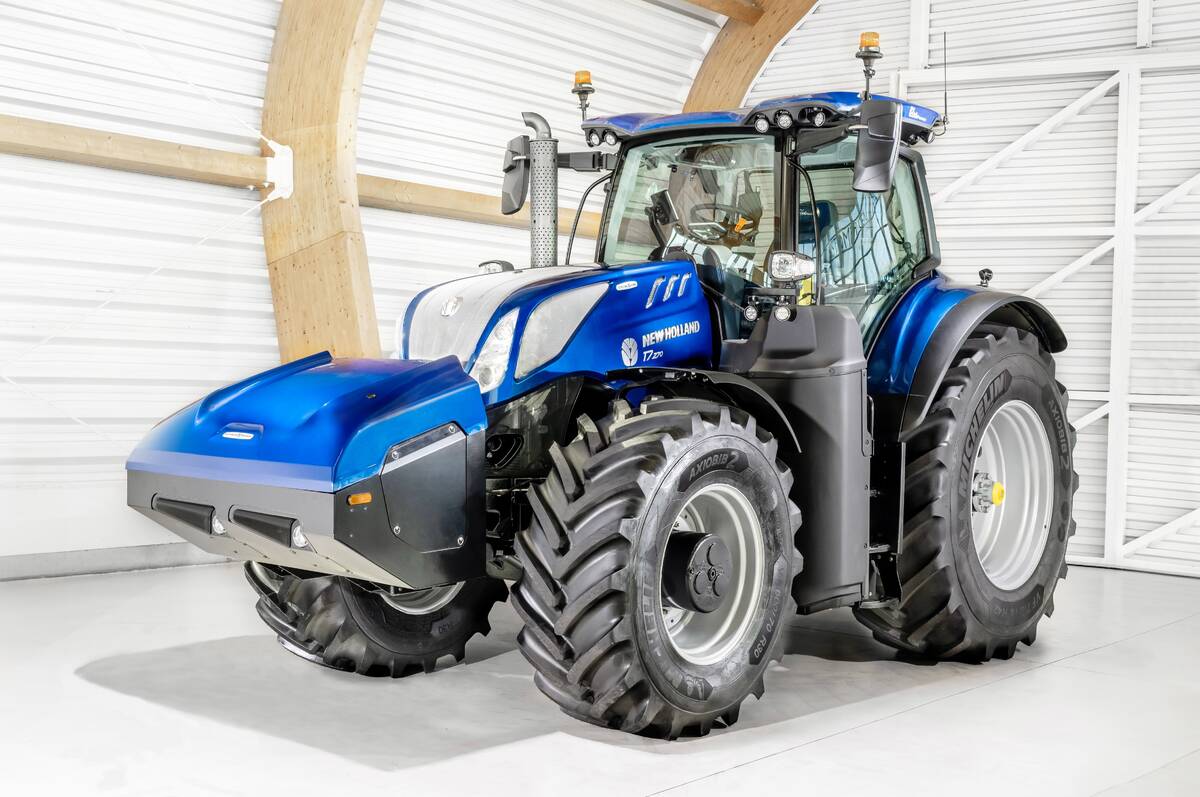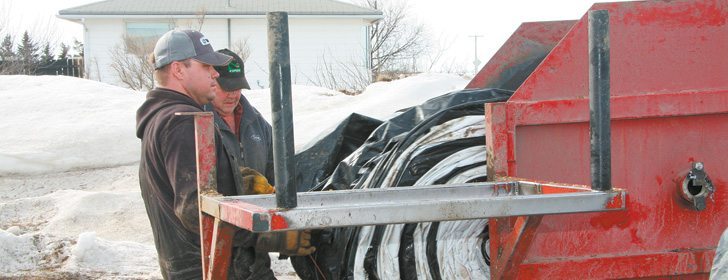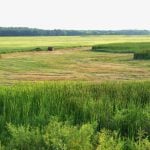EDMONTON — Ken Hoppins took advantage of a recent bear pit session with Alberta cabinet ministers to ask a question about grain bags: who is responsible for them?
The Kneehill County councillor, who asked his question of both agriculture minister Evan Berger and environment and water minister Diana McQueen, said even rural municipal councillors like himself don’t know which government department is in charge of trying to find a solution to grain bags.
“Agriculture Service Boards would like some help to get the problem solved,” said Hoppins.
Read Also

Methane tractor debuts at Agritechnica 2025
New Holland has unveiled its production-ready version of a T7.270 methane-powered tractor at the Agritechnica farm machinery show in Hanover, Germany.
McQueen said it is an issue she is hearing about more frequently.
“It comes up more and more,” said McQueen.
However, she didn’t have a clear answer about what councillors should do.
It’s a problem in need of a solution for rural municipalities across the Prairies.
“I think there are becoming increasingly more grain bags and we don’t know what we’re going to do with them. You can’t burn them. You can’t bury them,” said Hoppins. “Somebody has to take the lead, whether it’s environment or agriculture.”
Saskatchewan grain farmer Brad Hanmer bought a special grain bag-rolling machine to reroll his crumpled, unruly bags. About 100 rolled up bags are piled in a corner of the farm, waiting for the day they can be recycled. The pile is growing larger each year.
“It is an issue. I don’t want my countryside littered with plastic,” said Hanmer, who farms near Govan.
Creating a recycling system for all agricultural plastic has been an ongoing issue on the Prairies for years. It was first driven by the switch from sisal to twine for bales, then to plastic silage tarps, plastic bale bags and more recently grain bags.
It’s estimated 4,300 to 5,000 tonnes of polypropylene twine and cord were sold in Alberta in 2007 and 3,000 to 4,000 tonnes of polyethylene material like silage bags and covers. While no one has official statistics, the amount of polyethylene material is expected to increase dramatically with the popularity of grain bags.
The Alberta Plastics Recycling Association formed the Alberta Plastics Working Group in 2010 to find the best way to recycle agricultural plastics. A half dozen collection sites were established to get an understanding of the amount, type and quality of material involved and if there was a market for it. The pilot project also brought in plastic from British Columbia’s fruit growing region.
Association executive director Grant Cameron said one of the biggest obstacles was trucking the plastic to the recycling plant in southern Alberta.
“It’s very bulky. When you buy it, it’s nicely rolled up from the factory. Once they are used, they’re crumpled and misshapen and hard to get rolled.”
Crowfoot Plastics at the Green Acre Colony in Hussar, Alta., has been accepting the agricultural plastic as part of the pilot project.
The plant, which is a joint venture with Merlin Plastics, had recycled more than 300,000 pounds of agricultural plastic as of October, including material from Saskatchewan’s Grain Bag Recycling Pilot Project.
Dan Hofer of Crowfoot Plastics said 100,000 to 200,000 pounds of grain bags have been washed, extruded and turned back into resin at the facility in the past year, but it is not a pleasant job.
“They don’t have to be spotless, but some are gross. There is rotten grain and silage in them.”
Hofer said the last shipment from Saskatchewan looked like someone dragged the bags in mud before rolling them up.
“The dirtier it is, the more cost to us to clean,” he said. “There are enough other plastics around than to worry about grain bags.”
Cameron said government, recyclers and farmers are trying hard to find an answer to the problem of agricultural plastic waste, despite the obvious challenges still to overcome.
“We’re much closer to a solution than when the process started five years ago.”
Francis De Beaudrap has 50 to 60 used grain bags rolled up and piled at the back of his farmyard. He has used the bags on his farm near Trochu, Alta., for four years and estimates 30 to 40 other producers in his area also use them.
At an average of 10 bags a farm, that’s 300 bags of roughly 300 pounds each of plastic that need to be recycled in his central Alberta community.
Grain bags are an economical storage solution for De Beaudrap when handling high bulk grain such as barley. It avoids the expense of trucking the grain back to the yard and into the bins.
He is not ready to give away the high quality plastic, believing there should be some kind of refund system similar to pop bottles.
“I am storing them until there is some kind of market,” he said. “They’re wrapped, stored and bundled. I am not going to give it to somebody.”
Cameron said it’s not the first time a farmer has suggested a refund as an incentive to return plastic grain bags.
“This is not a new conversation. It’s interesting a farmer doesn’t expect to get paid for other farm material or tractor tires or garbage hauled into the landfill, but they would like to get paid for grain bags,” he said.
“Why grain bags? Nobody is asking money back for twine; only grain bags. It’s a challenging one for the industry. Nobody is ever going to get back from used grain bags what they paid for a virgin grain bag.”
Cameron said the value of grain bags isn’t in a used bundle but in what happens after they are washed and turned into plastic pellets.
“They are not sitting on copper wire.”
Crowfoot Plastic pays $150 per tonne for the used bags, which is about half the value of clean used plastic.
Cameron said it would be nice to pay farmers for making the effort to recycle the plastic bags, but a more feasible option may be pooling the money from the recyclers and returning it to municipalities and landfills to offset handling and transportation costs.















